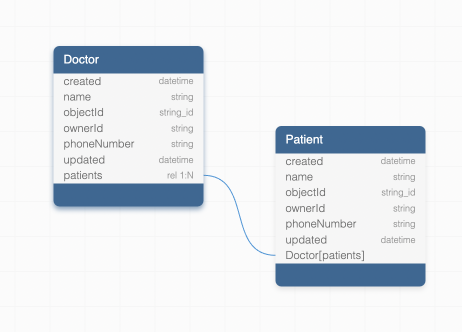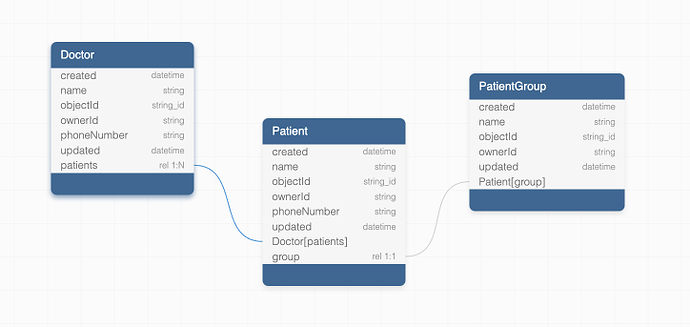Are you looking for help?
I’m looking for help with 1 to many relations. I tried Slack, but no response.
Are there any videos available?
Thanks
This is a support forum for reporting issues related to Backendless services. Please note that due to our support policy we cannot provide you help with debugging your code, consulting in regards to any language or third-party library usage. For this kind of questions we recommend using more appropriate forums like Stack Overflow.
In order to suggest you a quality solution, we shall usually ask you to provide the details mentioned below first. Including them into your topic right away helps us to start investigating your issue much faster.
In case you have a suggestion or an idea, the details below are not always required, though still any additional background is welcome.
Backendless Version (3.x / 6.x, Online / Managed / Pro )
Client SDK (REST / Android / Objective-C / Swift / JS )
Application ID
Expected Behavior
Please describe the expected behavior of the issue, starting from the first action.
-
-
-
Actual Behavior
Please provide a description of what actually happens, working from the same starting point.
Be descriptive: “it doesn’t work” does not describe what the behavior actually is – instead, say “the request returns a 400 error with message XXX”. Copy and paste your logs, and include any URLs.
-
-
-
Reproducible Test Case
Please provide a simple code that could be run in a new clean app and reproduce the issue.
If the issue is more complex or requires configuration, please provide a link to a project on Github that reproduces the issue.
We have really good documentation about working with relations:
https://backendless.com/docs/rest/data_relations.html
All videos are here https://www.youtube.com/@Backendless/videos. If there is no the one you are searching, thus it doesn’t exist, unfortunately.
P.s. could you, please, remove placeholders when write support request. Thanks.
Thanks for fast response.
Sorry about not removing placeholders.
Unfortunately it appears the documentation only covers 1 to 1 and I found no videos
I will have to wait. 
Thanks again.
Are you having a problem with the conceptual understanding or is there a specific question?
It’s mainly the conceptual understanding.
I’ve read documents and watched videos that diagram it.
Struggling not seeing it setup in something like Backendless. I know I’m a visual learner.
Thanks for asking.
Relations will be covered in great detail in the Database Training Course.
I recommend starting the course as the information we already shared is foundational for understanding what’s coming next.
Regards,
Mark
I believe I’m over thinking this. I created a relational database for a Dr group some 30 years ago using a product called DataPerfect. I had to set up a field that was auto incrementing and set it as an index to keep each “patient” separate.
As I study Backendless more, you have already baked this into your system.
I don’t have to worry about keeping the records separate based on who created them your field of userId does that automatically.
Correct me if I’m wrong.
Warmest regards,
Dave
If you are talking about the Doctor-Patient relationship, it can be modeled as shown below:

The patients column is a one-to-many relationship where for a single doctor you can have one or more patients.
Regards,
Mark
I have reviewed about half the videos yesterday.
Warmest regards,
Dave
Actually in the Dr database all the patients belong to the group. So all I needed was to keep the patients separated for reporting purposes
In my project now I will have customers who will input lots of information about themselves. On some tables they will only have one record.
On others they will enter multiple records on that table.
But your system will keep all of a customer’s records on every table identifiable by you userId.
Warmest regards,
Dave
Every table contains entities of a specific kind. Therefore all patients should be stored in the Patient table. If you need to add a concept of a group. it can be modeled like this:
Alternatively, you could have the groupName column in the Patient table that contains the group name.
Regards,
Mark
Ok thanks. I may have more questions questions later.
If you will indulge me a minute.
Fifteen years ago I was trying another online drag and drop database system called InfoDome.
I started interacting with the CTO whos name was Mark. I learned his last name was Wozniak. Yep Steve’s brother. He shared some good stories about the beginning of Apple.
Cheers.
Warmest regards,
Dave
1 Like

